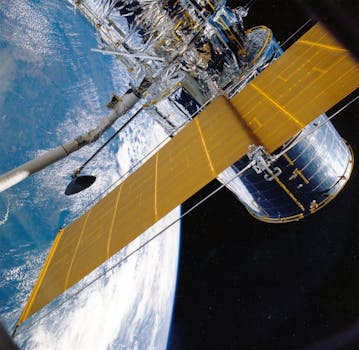
GEO Satellites: Understanding the Technology and Applications of Geostationary Orbit Satellites
GEO satellites, or geostationary orbit satellites, are a type of satellite that orbits the Earth at an altitude of approximately 36,000 kilometers above the equator. At this altitude, the satellite’s orbital period is synchronized with the Earth’s rotational period, allowing it to remain stationary relative to a fixed point on the Earth’s surface. This unique characteristic makes GEO satellites an essential component of modern telecommunications, navigation, and weather forecasting systems.
GEO satellites have been in use for several decades, with the first geostationary satellite, Syncom 2, launched in 1963. Since then, hundreds of GEO satellites have been launched, providing a wide range of services including television broadcasting, telecommunications, navigation, and weather forecasting. The popularity of GEO satellites can be attributed to their ability to provide continuous coverage of a specific region, making them ideal for applications that require a high level of availability and reliability.
How GEO Satellites Work
GEO satellites work by transmitting and receiving signals to and from Earth-based stations. The satellite’s antenna is pointed towards the Earth, and it receives signals from a network of ground stations. The signals are then amplified and re-transmitted back to Earth, allowing the satellite to act as a repeater in the sky. This process allows GEO satellites to extend the reach of telecommunications networks, providing connectivity to remote and underserved areas.
The technology used in GEO satellites is highly advanced, with modern satellites featuring high-gain antennas, transponders, and propulsion systems. The satellites are designed to operate for extended periods, typically ranging from 10 to 20 years, and are equipped with backup systems to ensure continuous operation in the event of a failure.
Applications of GEO Satellites
GEO satellites have a wide range of applications, including telecommunications, navigation, weather forecasting, and Earth observation. In the field of telecommunications, GEO satellites are used to provide television broadcasting, internet connectivity, and mobile communications. They are also used for navigation, providing location information and timing signals for GPS and other navigation systems.
In addition to these applications, GEO satellites are also used for weather forecasting, providing images of cloud patterns, sea surface temperatures, and other meteorological data. They are also used for Earth observation, monitoring the environment, and tracking natural disasters such as hurricanes, wildfires, and floods.
Challenges and Limitations of GEO Satellites
Despite their many advantages, GEO satellites also have several challenges and limitations. One of the main challenges is the high cost of launching and operating a GEO satellite, which can range from hundreds of millions to billions of dollars. Additionally, the satellite’s orbital position must be carefully planned to avoid interference with other satellites and to ensure optimal coverage of the desired region.
Another limitation of GEO satellites is their relatively low bandwidth compared to other types of satellites, such as medium Earth orbit (MEO) and low Earth orbit (LEO) satellites. This can limit their use for applications that require high-speed data transfer, such as video streaming and online gaming.
Future of GEO Satellites
Despite these challenges and limitations, the future of GEO satellites remains bright. Advances in technology are continually improving the performance and capabilities of GEO satellites, allowing them to provide higher bandwidth, greater reliability, and more advanced services. The development of new propulsion systems, such as electric propulsion, is also reducing the cost and increasing the efficiency of launching and operating GEO satellites.
In conclusion, GEO satellites are a vital component of modern telecommunications, navigation, and weather forecasting systems. Their unique characteristics, including their geostationary orbit and high-gain antennas, make them ideal for a wide range of applications. As technology continues to advance, we can expect to see even more innovative uses of GEO satellites, further expanding their role in our global communications infrastructure.



